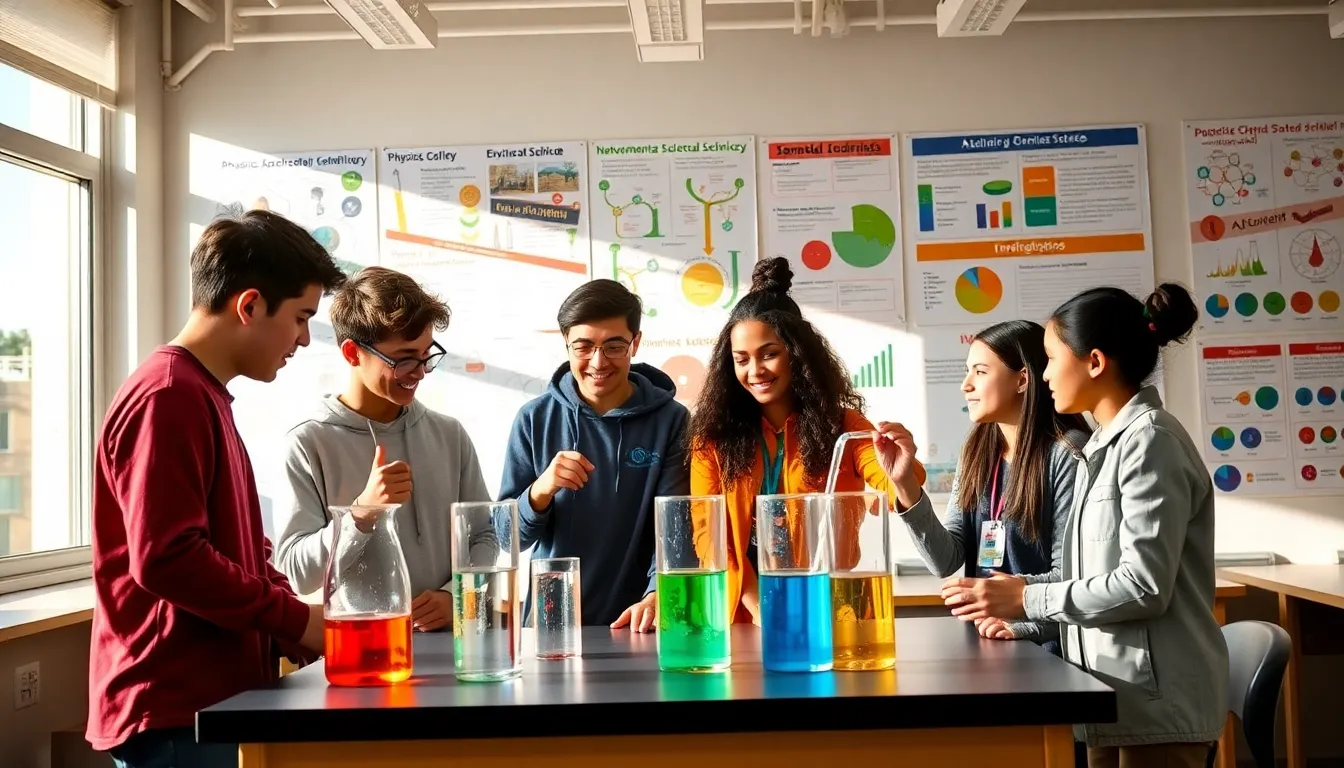In the ever-evolving landscape of education, integrated science has emerged as a pivotal educational approach aimed at fostering a more holistic understanding of scientific principles. Redwebzine Integrated Science, in particular, blends various scientific disciplines into a cohesive learning experience. This article explores what Redwebzine Integrated Science is, its key features, benefits for students, innovative teaching strategies, and future trends in integrated science education.
Table of Contents
ToggleWhat Is Redwebzine Integrated Science?

Redwebzine Integrated Science is an educational platform that combines elements from physics, chemistry, biology, and environmental science, allowing students to gain a comprehensive understanding of these interconnected fields. This approach goes beyond traditional subject boundaries, enabling learners to see how different scientific concepts interact in real-world scenarios. By promoting interdisciplinary learning, Redwebzine Integrated Science equips students with the critical thinking and problem-solving skills essential for navigating today’s complex scientific landscape.
Unlike a segmented curriculum, where subjects are taught separately, Redwebzine Integrated Science integrates various scientific topics, helping students recognize the relevance of science in daily life and global issues. This method not only enhances engagement but also encourages deeper comprehension, making science more accessible and relatable.
The Importance of Integrated Science Education
Integrated science education plays a crucial role in nurturing a scientifically literate society. In our increasingly complex world, problems often span multiple scientific domains, necessitating a more interconnected understanding of science. Integrated science promotes the idea that knowledge is not only cumulative but also interconnected, making it essential for students to learn how different scientific disciplines influence one another.
For instance, understanding climate change requires knowledge of chemistry (the role of greenhouse gases), biology (effects on ecosystems), and physics (energy transfer). By integrating these disciplines, students become better equipped to tackle real-world challenges. Besides, integrated science education fosters collaboration among students, encouraging teamwork and communication, skills that are highly valued in today’s job market.
Key Features of Redwebzine Integrated Science
Redwebzine Integrated Science comes with several distinctive features designed to enhance the learning experience. These include:
- Curriculum Flexibility: The curriculum is adaptable, allowing educators to tailor lessons based on student interests and current scientific advancements.
- Hands-On Activities: Through experiments and project-based learning, students actively engage with science rather than passively absorbing information.
- Real-World Applications: Lessons often incorporate contemporary issues, demonstrating the application of scientific concepts in everyday life. This relevancy bridges the gap between theory and practice.
- Technology Integration: Utilizing digital platforms and collaborative tools, Redwebzine Integrated Science enhances students’ learning experiences, equipping them with technological skills essential for the 21st century.
- Assessment Diversity: The program emphasizes varied assessment methods, including formative and summative evaluations, to capture a comprehensive understanding of student progress.
Benefits of Integrated Science for Students
The advantages of integrated science education, particularly through Redwebzine, are manifold for students:
- Enhanced Critical Thinking: By connecting different scientific disciplines, students develop enhanced critical thinking skills, enabling them to analyze and synthesize information effectively.
- Increased Engagement: Interdisciplinary learning tends to be more engaging, as students can see the relevance of their studies in real life, which motivates them to participate actively.
- Improved Retention: Integrated science facilitates better retention of knowledge by allowing students to contextualize their learning.
- Preparation for Future Studies: Exposure to various scientific disciplines prepares students for higher education and future career choices in STEM fields.
- Development of Soft Skills: Collaborating on projects and participating in discussions cultivates essential soft skills, such as communication, teamwork, and adaptability.
Innovative Teaching Strategies in Redwebzine Integrated Science
Redwebzine Integrated Science employs several innovative teaching strategies that reshape how science is taught and understood:
- Project-Based Learning (PBL): This strategy encourages students to engage in projects that require them to apply scientific principles, fostering a deeper understanding of the material.
- Flipped Classroom Models: Students often review content at home and engage in hands-on activities during class time, allowing for more interactive and collaborative learning experiences.
- Interdisciplinary Teams: Teachers from different scientific disciplines collaborate to create a cohesive curriculum, ensuring that students receive well-rounded instruction that breaks down subject silos.
- Use of Multimedia and Simulation Tools: Digital simulations and interactive modules make abstract concepts more tangible, allowing students to visualize scientific phenomena and experiment in a virtual environment.
Future Trends in Integrated Science Education
As educational practices continue to evolve, the future of integrated science education, particularly within platforms like Redwebzine, is positioned for exciting advancements. Some emerging trends include:
- Emphasis on Sustainability: With global awareness of environmental issues rising, future curricula will likely prioritize sustainable practices and the environmental impact of scientific advancements.
- Increased Use of Artificial Intelligence: AI tools are becoming commonplace in education, offering personalized learning experiences and adaptive assessments that cater to individual student needs.
- Global Collaborations: Future science education will likely see more international partnerships, allowing students to engage with peers worldwide, fostering a broader understanding of global scientific challenges.
- Focus on Social-Emotional Learning (SEL): Recognizing the importance of emotional intelligence in education, integrated science curriculums may increasingly incorporate SEL to help students navigate academic and personal challenges.
Conclusion
Redwebzine Integrated Science stands out as a comprehensive approach to science education that emphasizes the interconnectedness of various scientific fields. By fostering a more engaging and relevant learning environment, it prepares students not only for academic success but also for real-world challenges. As teaching methods continue to innovate and adapt, the future of integrated science education holds much promise, equipping students with the critical skills needed for an increasingly complex world.


